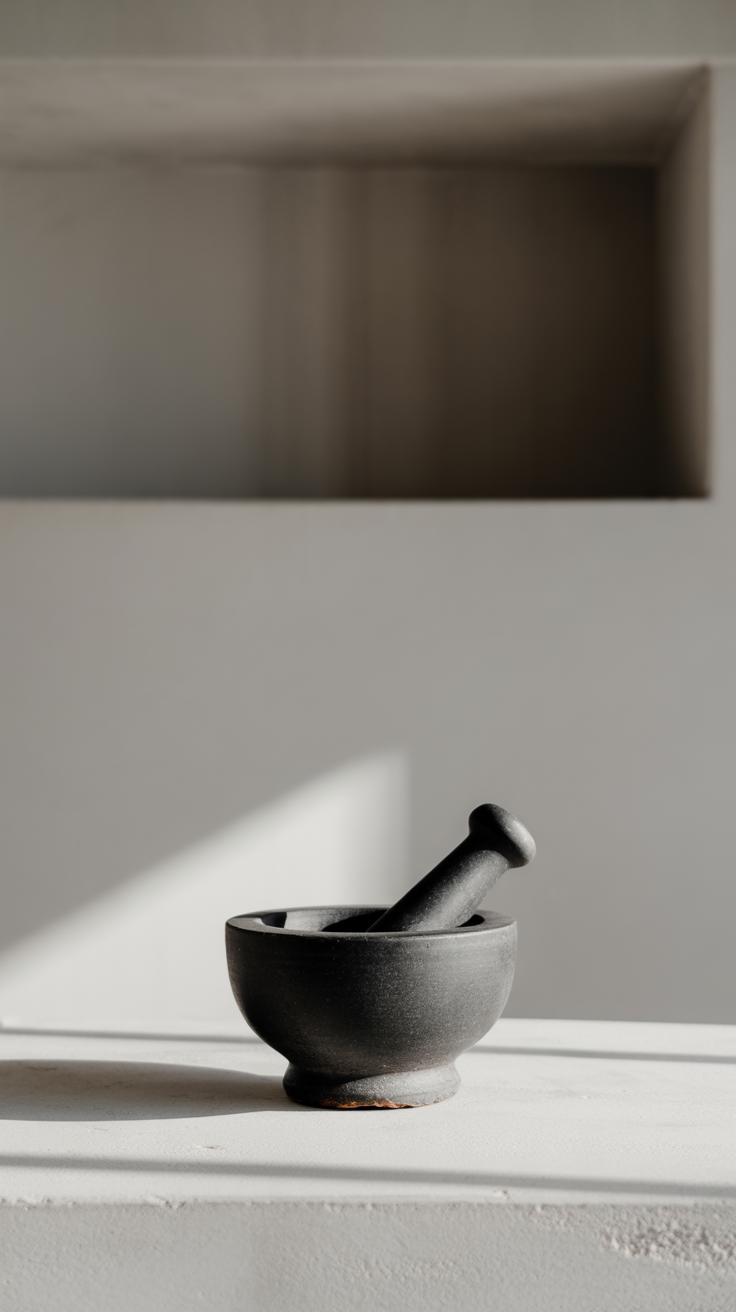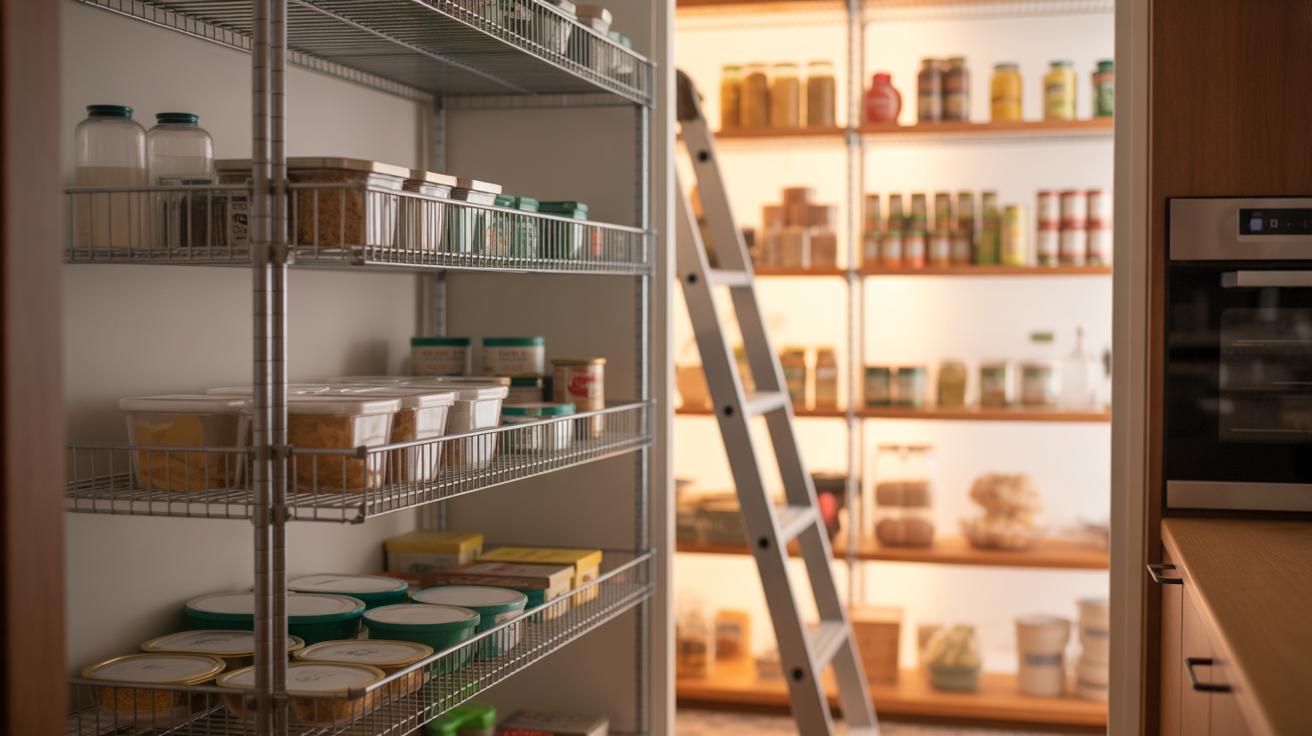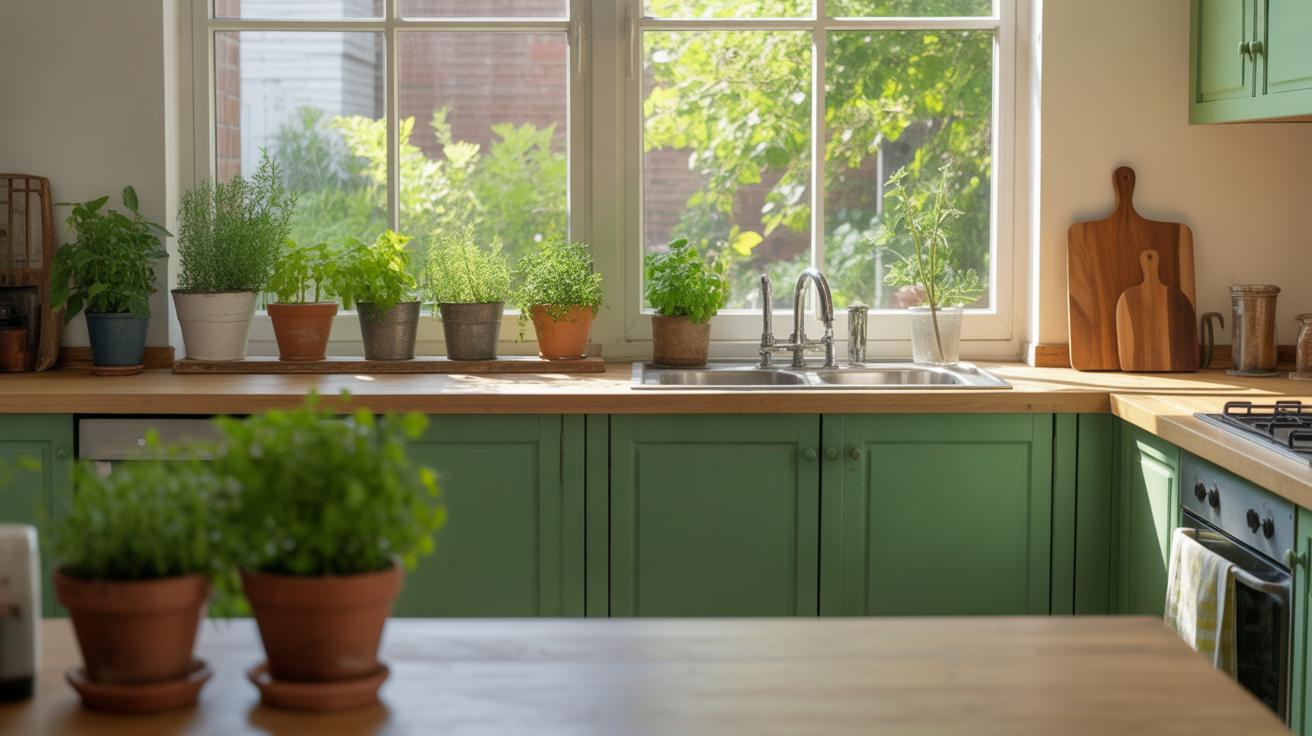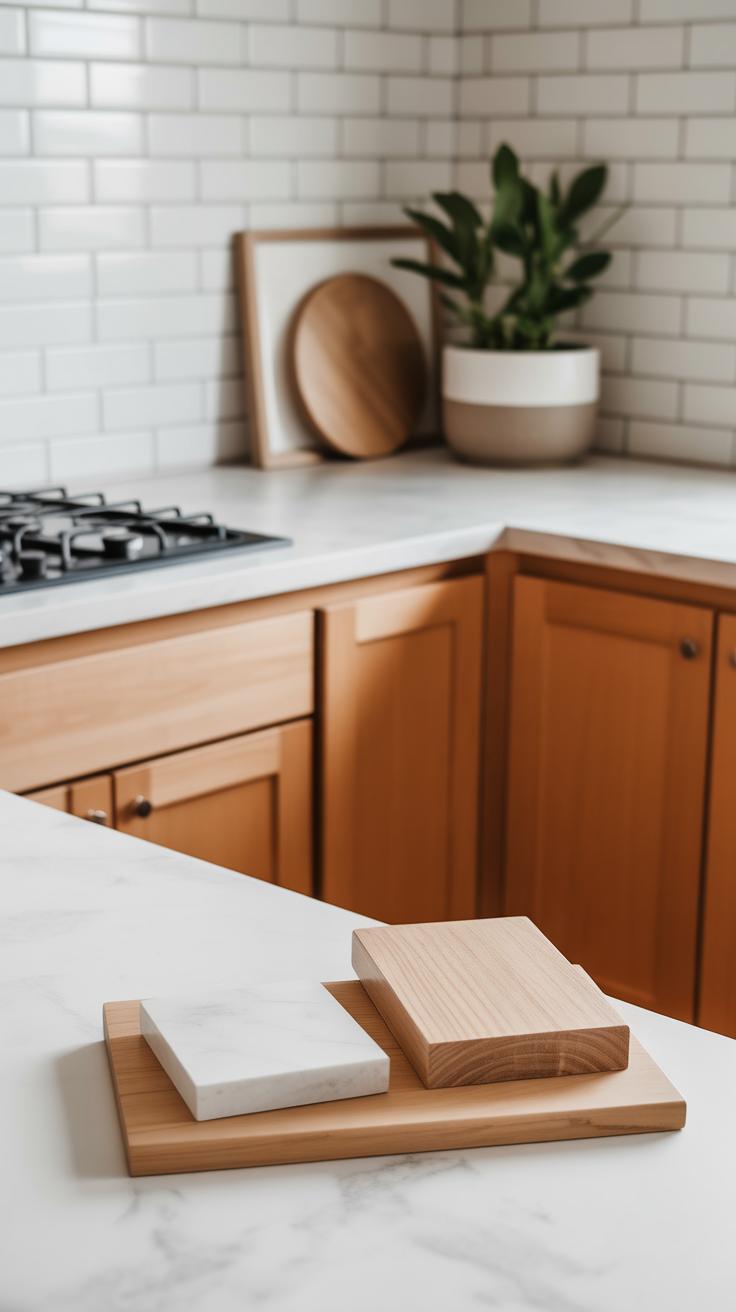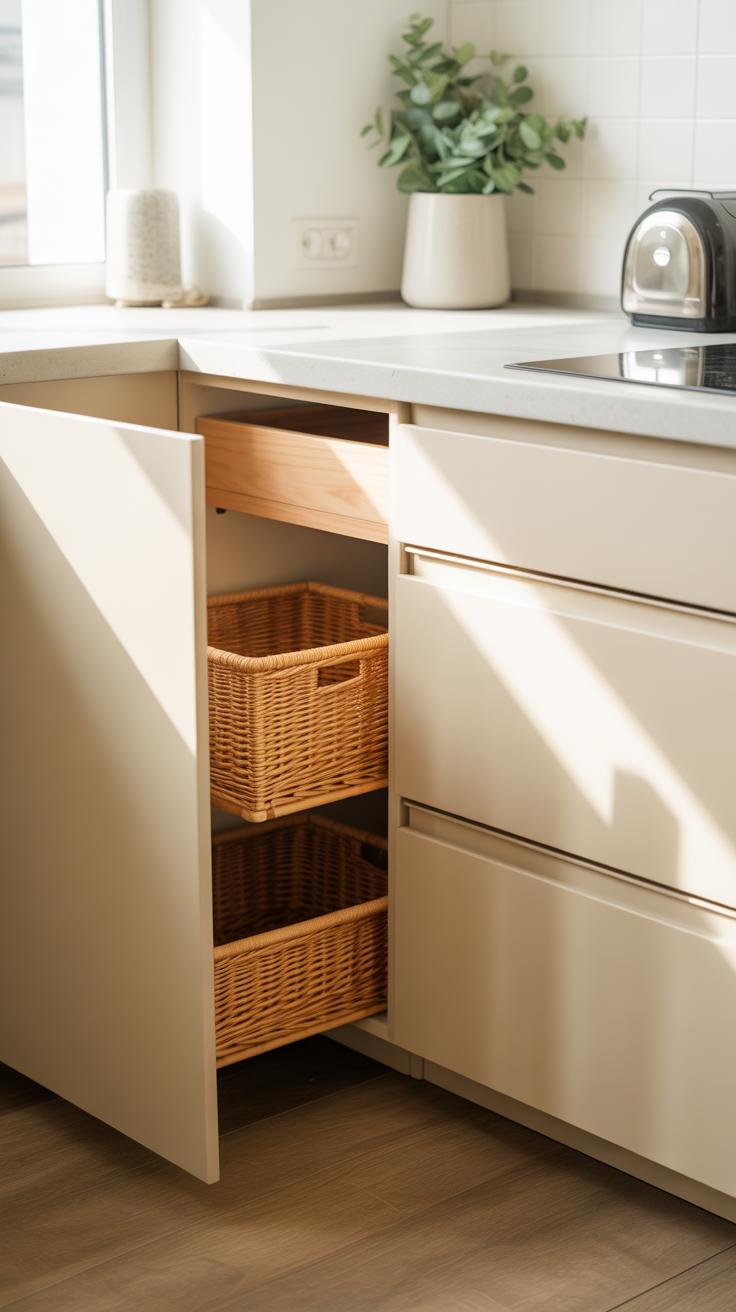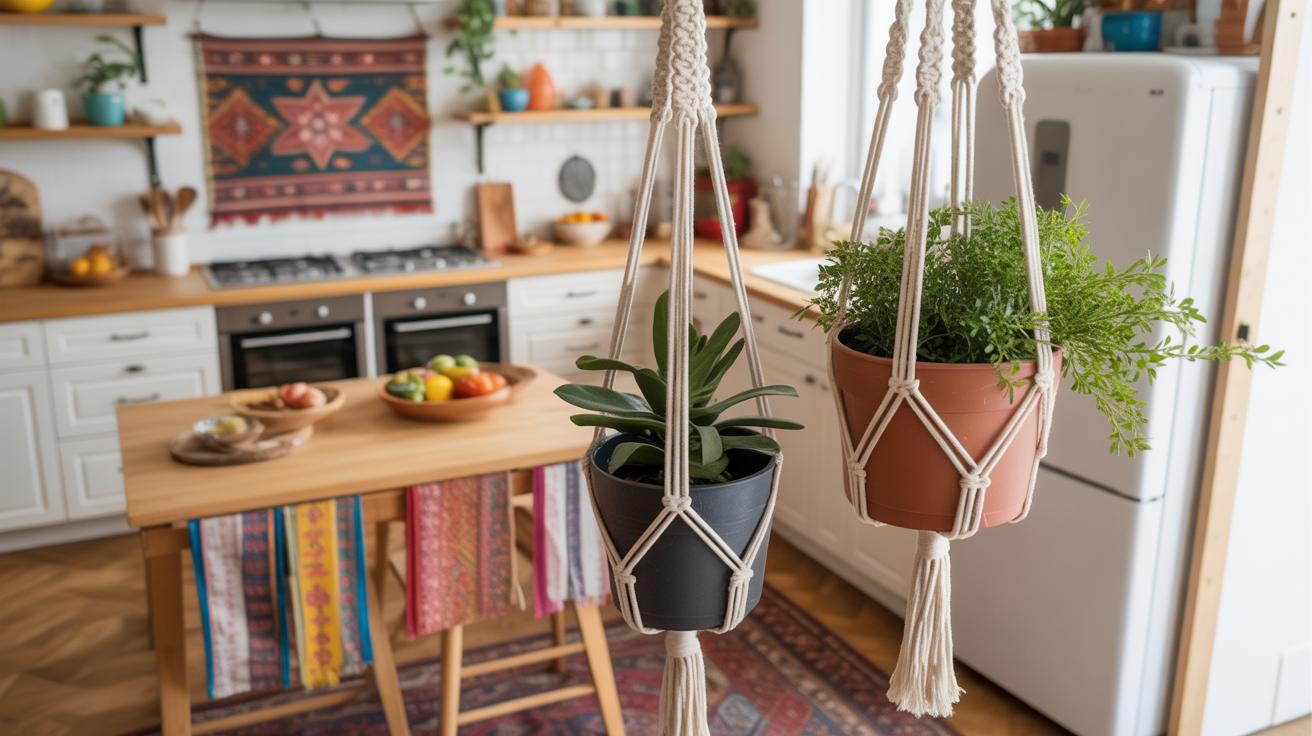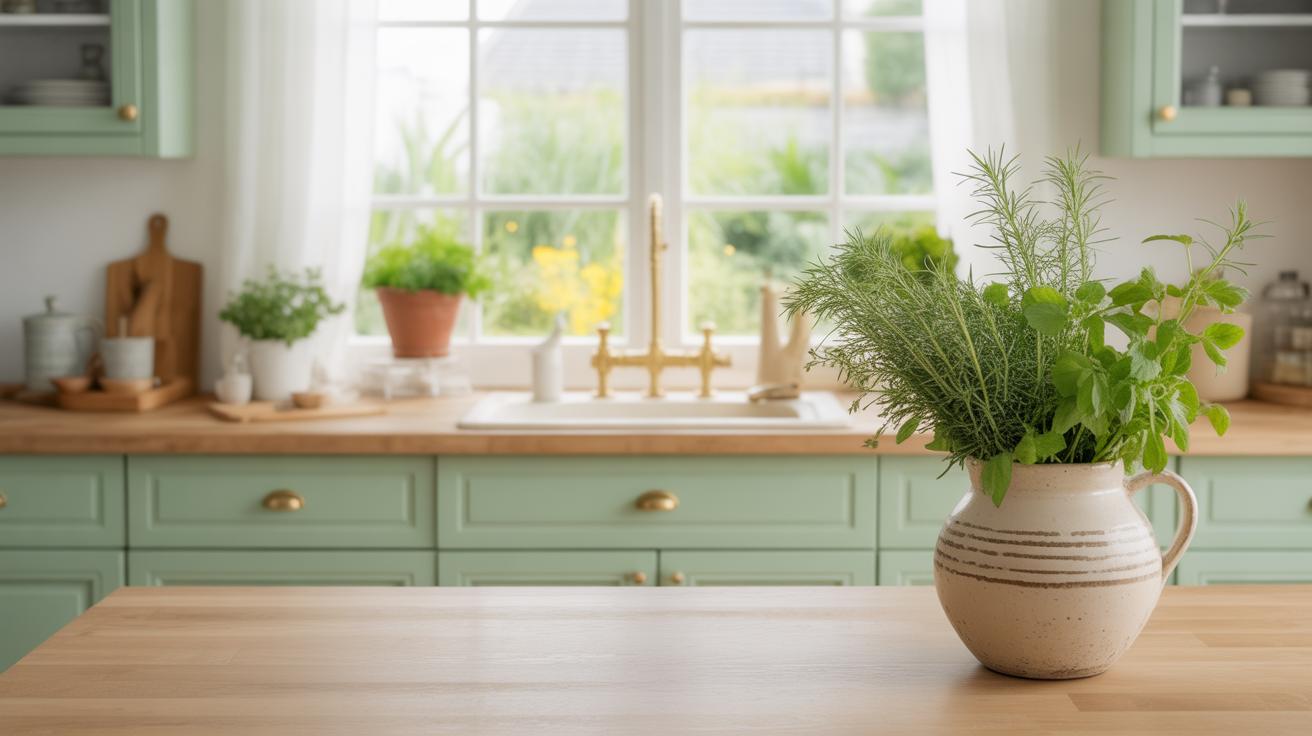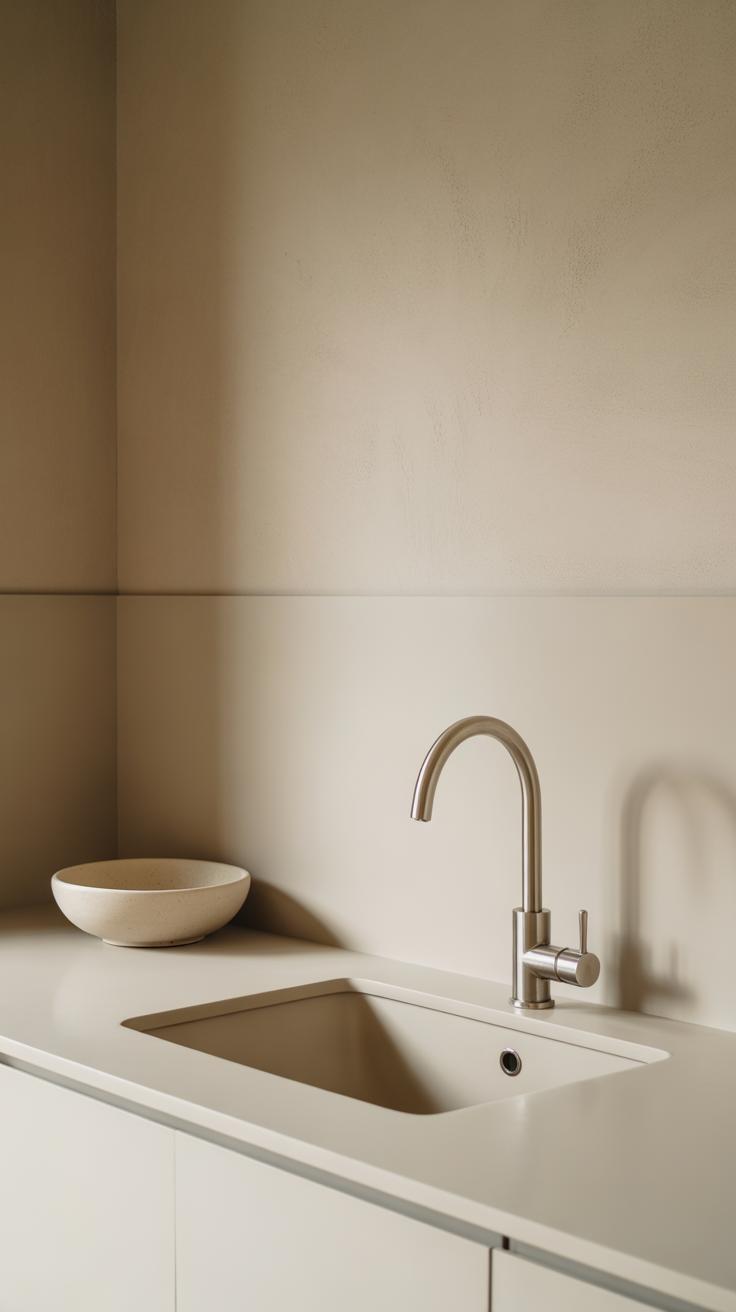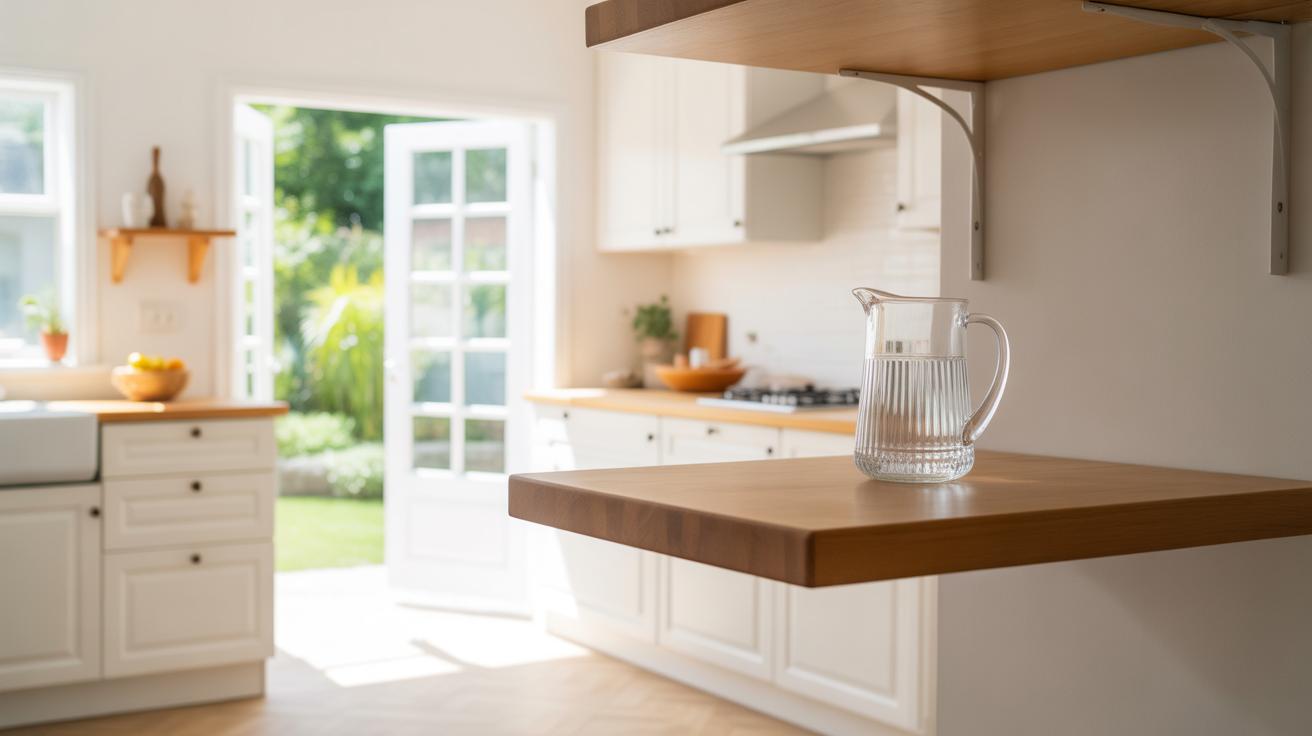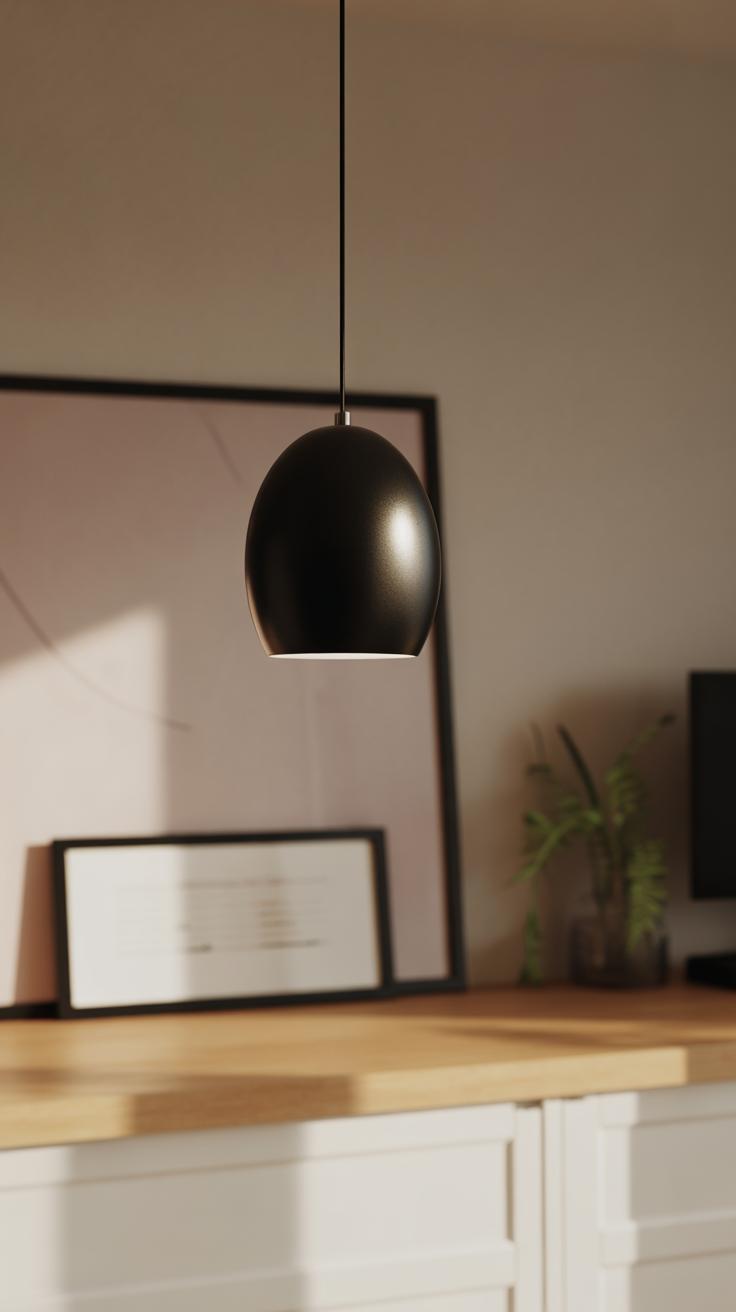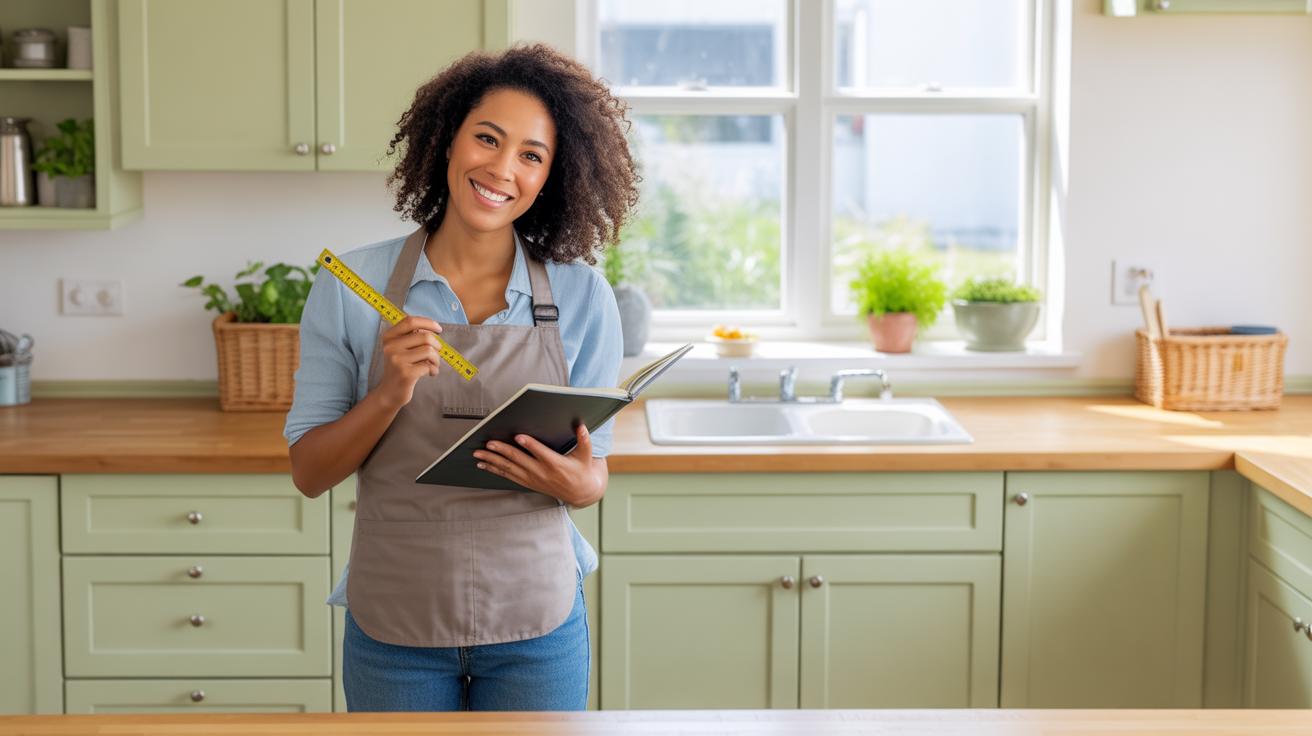Introduction
Creating a minimalist kitchen is about more than just style. It’s about transforming your kitchen into a space that feels open, clean, and easy to use. When you reduce clutter and choose only the essentials, you make cooking and cleaning more enjoyable. This lifestyle helps you focus on what really matters—your experience in the kitchen.
In this article, you will discover useful ideas and tips to design a minimalist kitchen. From choosing the right colors and materials to smart storage solutions, we’ll guide you through every step. You’ll learn how simplicity can lead to a more relaxing and efficient kitchen space that supports a clutter free lifestyle.
Understanding Minimalism For Your Kitchen
Minimalism in kitchen design means focusing on what truly matters—function and simplicity. It’s not just about having a clean space; it’s about choosing only what you really need. Imagine your kitchen without excess gadgets, utensils you rarely use, or dozens of decorative items cluttering counters. Instead, you keep essentials close and nothing else.
This approach naturally leads to a clutter-free lifestyle. When you have fewer things, it’s easier to keep things tidy. It encourages you to rethink what tools, cookware, and appliances you actually use daily versus what just takes up space.
At its core, minimalism is about removing distractions and making your kitchen a place that works for you. It’s not about extremes—like only having two plates and a single pot—but about streamlining your belongings so every item has a clear purpose.
What is Minimalism
Minimalism centers on the idea of using less while valuing purpose over decoration. Rather than filling spaces with objects, the focus turns to function. Think about a living room with only the furniture you regularly use: a sofa, a table, and maybe a lamp. No extra knick-knacks or bulky shelves loaded with things that serve no real need.
In the kitchen, this could mean prioritizing multi-use tools over single-purpose gadgets or choosing sleek cabinetry that hides clutter instead of open shelves overflowing with every cup and bowl. It’s about making everything count.
You might find yourself asking: do I need three spatulas or just one good one? What really matters to my cooking style? Accepting a bit less becomes freeing in practice.
Benefits of a Minimalist Kitchen
Reducing the number of items and simplifying design can change how you live in your kitchen. Fewer objects mean more space—so your countertops feel open, and movement isn’t constantly interrupted by clutter.
Cleaning also gets simpler. Surfaces wipe down faster without all those items in the way, and organizing becomes less of a chore. I’ve noticed that after decluttering, I actually want to spend more time cooking because it feels less stressful.
Besides physical space, a minimalist kitchen can improve mental clarity. When you aren’t surrounded by distractions, your mind can focus better. It’s easier to find what you need, and meals feel less rushed.
Still, minimalism isn’t a strict rulebook; it’s a way to tailor your kitchen to your true needs, which might change over time. The key is purposeful simplicity.
Choosing The Right Layout For Your Kitchen
Open Layouts
Open kitchen layouts remove barriers—walls, usually—and create a sense of space and light that many find refreshing. When your kitchen flows directly into dining or living areas, it feels larger, less confined. This openness encourages a cleaner look because it’s harder to hide clutter behind walls. You’re more likely to keep counters clear when everything is visible from other parts of the home. Fewer cabinets and more open shelving or counters help focus on essentials, which matches the minimalist approach quite well.
Still, an open layout can sometimes tempt you to spread out your belongings more casually, which can lead to clutter creeping back in. It demands discipline but offers that airy, light environment which many crave. It’s almost like a trade-off between freedom and restraint.
Compact Layouts
Compact layouts like the galley or L-shape kitchens concentrate everything within a smaller footprint. This can actually simplify things – when everything is close at hand, you naturally reduce unnecessary items. These layouts push you to organize carefully because space is limited. For instance, in a galley kitchen, two parallel counters create a natural workflow corridor, which can keep cooking tidy and quick.
The downside? Sometimes tight quarters feel a bit cramped or restrictive, especially if you like room to move. But if your kitchen doubles as a workspace and a place to relax, the compact setup can actually reduce clutter better than an open kitchen might. It forces choices on what stays and what goes, based on what’s genuinely needed daily.
Considering your routine and habits helps decide which layout fits your idea of minimalism. Do you want light and openness that invites visibility, or do you prefer the focused containment of a compact space? Both can keep your kitchen simple—but in very different ways.
Selecting Materials And Colors
Choosing the right materials and colors is central to creating a minimalist kitchen that feels both calm and practical. Neutral palettes—think whites, soft grays, and gentle earth tones—help open up your space. They make kitchens feel quiet and uncomplicated. You might find that white cabinets bounce light around, making even small kitchens appear larger. But sometimes, too much white can feel cold or sterile, so mixing in warmer tones like beige or light taupe softens the mood.
Natural materials bring subtle texture without cluttering the eye. Wood, for example, adds warmth but can still keep things simple if its finish is smooth or matte rather than glossy. Stone surfaces, like quartz or concrete, balance durability and style. Metal accents—stainless steel or brushed brass—introduce another layer of interest without overwhelming the space. These materials last long and are easy to maintain, which fits the minimalist goal of functional simplicity.
Consider this: when you choose surfaces, ask yourself how they handle daily use. Porcelain tiles, for instance, resist stains and wipe clean quickly, making them practical for backsplashes. Countertops in durable stone don’t just look good; they save you from constant upkeep. It’s about picking things that won’t demand attention or care beyond the necessary. You might hesitate between shiny and matte finishes, but the latter usually keeps the vibe understated.
What colors and materials make you feel calm in your kitchen? The answer might shift once you live with them, which is why testing samples or living with small elements first could help. Minimalism isn’t about strict rules—it’s more of a balance between what feels open and what feels comfortable.
Smart Storage Solutions To Hide Clutter
In a minimalist kitchen, what you don’t see makes a big difference. Built-in cabinets are one of the easiest ways to keep your counters clear while keeping everything you need within arm’s reach. When these cabinets have clean, simple lines and no extra detailing, they blend into the kitchen’s overall look and disguise whatever’s stored inside. I’ve noticed that sliding doors or handleless fronts help the kitchen feel less busy—sometimes it’s those little design choices that trick your eye into sensing calm.
Drawers, too, can be more than just catch-alls. Using dividers, inserts, or adjustable organizers means utensils, gadgets, and kitchen tools each have their own place. This approach saves time—you’re not digging around—and oddly enough, it kind of encourages you to put things back where they belong (though, I admit, that doesn’t always happen). You might want to experiment with segmented trays or custom inserts, depending on what you use daily.
Think about this: could your kitchen drawers and cabinets be working harder at hiding clutter? Sometimes, it’s tempting to show off pretty bowls or cutting boards, but when everything has a clearly defined spot and drawers close smoothly, your kitchen just feels calmer. It’s a quiet design choice, but one that pays off every time you step into the room.
Minimalist Kitchen Appliances Choices
Choosing appliances for a minimalist kitchen often means resisting the urge to buy every shiny gadget that promises to make cooking easier. Instead, the focus lies on keeping just the essentials—those you really use. Think about your daily cooking habits: what appliances do you reach for again and again? For many, a basic refrigerator, a stove or cooktop, and a microwave cover most needs.
Reducing appliances helps cut down on clutter and makes your kitchen feel calmer. Plus, fewer gadgets means fewer cords, less countertop chaos, and easier cleaning. You might hesitate, wondering if you’ll miss that specialty tool, but most times, the basics cover 80% of your cooking.
Essential Appliances
Here’s a simple list that works for most kitchens:
- Refrigerator: You can’t really skip this one. Look for a model with a clean, simple design.
- Cooktop or Range: Whether gas or electric, a single unit that combines burner and oven is often enough.
- Microwave: Useful for quick reheating and defrosting, but pick a compact model.
- Basic Coffee Maker or Kettle: Stick to what you use daily—even if it’s just boiling water.
When you stick to this core group, your kitchen remains straightforward and uncluttered.
Multipurpose Devices
Appliances that do several things at once suit minimalist kitchens perfectly. Instead of a toaster, air fryer, and instant pot crowding your counters, go for devices that combine their functions.
- Instant Pot or Multi-Cooker: It steams, sautés, slow cooks, and pressure cooks. I was skeptical at first, but it really replaces multiple pots and pans.
- Blender with Food Processor Attachments: Saves space by handling everything from smoothies to chopping veggies.
- Convection Microwave Oven: A microwave that also bakes and roasts replaces a standard oven for many people.
You might feel a little limited at first. Maybe you’ll miss having specialized appliances, but these multipurpose tools keep the kitchen lean and functional, striking a good balance between simplicity and capability.
Creating Clear And Clean Counter Space
Limit Counter Items
Keeping counters clear starts with being selective about what stays out. It’s tempting to leave many things within reach, but ask yourself: what do you really use daily? Usually, just a few essentials make sense—like a coffee maker, a cutting board, or maybe a knife block. Even then, it’s best to choose compact or streamlined versions that don’t gobble up space. Personally, I find that having just two or three items out keeps the kitchen feeling calmer. It’s not just about looks; you want room to work and prep without constant shifting or tidying.
Try to avoid letting “maybe useful someday” gadgets or decor creep in. Those small extras pile up quickly. The fewer items on the counter, the easier it is to maintain order. If you find yourself picking up the same appliance or tool repeatedly, it earns the spot. Everything else can stay stashed away.
Regular Cleaning Routines
Clean counters don’t happen by accident. Developing small habits can help keep the mess at bay. For example, wiping down surfaces every evening usually takes just a few minutes but makes mornings much smoother. I’ll admit, there are days when I skip it and regret it later when crumbs and smudges accumulate.
Set reminders for a deeper clean once or twice a week. That’s the time to clear away the less obvious clutter—spills, stains, or stray items that sneak back into the open. If your counters are mostly clear, these routine cleans won’t feel like a chore but rather a quick reset for an already calm space.
Can you imagine how much lighter the kitchen feels when you don’t have to sort through piles just to find a bowl or a spoon? Testing out different habits might take some trial and error, but the reward—a clear, functional counter—is definitely worth exploring.
Lighting And Decoration Choices
Simple Lighting Fixtures
Natural light plays a surprisingly big role in making a minimalist kitchen feel open and calm. If you can, keep windows uncovered or with just sheer curtains to let daylight flood in. The effect is subtle but powerful—it invites a sense of space without effort. When natural light fades, aim for basic fixtures that don’t draw too much attention to themselves. Think along the lines of slim pendant lights or recessed ceiling lights with clean lines. You don’t want lighting that shouts for attention or adds visual weight.
Sometimes, a single well-placed fixture can be enough. I remember visiting a minimalist kitchen where one narrow pendant hung over the island and the whole room felt balanced and intentional. Overdoing it could make things feel cluttered even with minimalist décor, so less really is more here.
Minimal Decorations
Choosing decorations for a minimalist kitchen asks for some restraint, but not boredom. Pick just a few items that carry meaning or offer visual interest without overpowering the space. A small potted plant here, a simple ceramic bowl there—these add warmth and personality subtly.
Artwork, if you go that route, should be limited to one or two pieces with clean design or muted tones. Natural textures like wooden utensils or woven baskets bring a cozy feel without turning your counters into a display shelf. The challenge is to pause and ask, “Does this add comfort or just clutter?” That question helps keep your kitchen peaceful and inviting, not crowded.
Maintaining Your Minimalist Kitchen
Keeping a minimalist kitchen clear over time isn’t always simple. It takes some effort and, well, a bit of discipline—something I’ve noticed from my own experience. Things tend to creep back in, little by little, if you’re not careful. So setting regular reminders to declutter can help. Maybe once every few months, take a moment to sift through your drawers and cupboards. Toss or donate anything unused for a while. Reorganizing at those times also refreshes the space, makes it easier to spot what’s really needed.
Another tricky part is being mindful about what you bring in. I mean, it’s tempting to buy a new gadget because it “might be useful.” But over time, those “nice-to-haves” add up fast, cluttering your shelves. Try asking yourself whether each piece truly fits your daily needs before buying. Often, fewer but well-chosen items keep clutter away and actually make cooking feel simpler.
- Schedule decluttering sessions—don’t let old habits pile back in.
- Evaluate new kitchen tools carefully before adding them.
- Consider if an item complements what you already own or duplicates it.
- Be honest about how often you use certain items; if rarely, they probably aren’t necessary.
It can feel repetitive, these check-ins. Yet, they’re part of maintaining the calm space you want. The effort matters because your kitchen’s order reflects how you live in it. And you may find, just as I did, that the clarity it brings is worth returning to again and again.
Personalizing Your Minimal Kitchen Space
Minimalism doesn’t mean your kitchen has to feel cold or impersonal. Actually, you can—and should—shape the space to reflect who you are, without undoing all the simplicity you worked hard to create. It’s just about picking the right ways to bring in your personality without crowding the room.
Start by focusing on what really matters to you. Maybe you love coffee and want a small, stylish espresso setup visible—but keep it neat. Or perhaps you cherish a particular color palette, so incorporate those hues in a few carefully chosen items, like cooks’ towels or a ceramic utensil holder.
Choosing Functional Beauty
Think about items that serve more than one purpose but also catch your eye. You don’t want random knickknacks sitting around, but there’s space for pieces that function well and feel pleasing. For example:
- A well-designed cutting board that doubles as a serving tray
- Utensils with clean lines and a finish that matches your kitchen hardware
- Storage containers that look as good as they keep ingredients fresh
It’s okay if something is beautiful but not necessarily minimal in the traditional sense—as long as it has a purpose and adds to the experience of cooking or being in your kitchen.
Incorporating Subtle Details
Small touches can make a room feel alive without adding clutter. A single, healthy plant on a windowsill or a tiny herb pot can add a bit of life and freshness. A simple, framed print or photo, lean it casually on a shelf or countertop, not hung as a centerpiece.
Try to keep these details subtle and limited so they don’t compete with the clean lines or make the space feel crowded. Personal items that you actually use or glance at often are better than “just because” decorations. That’s how real personality sneaks in—quietly, not shouting for attention.
Conclusions
Your kitchen can become a calming place when you embrace minimalist ideas. By keeping only what you need and organizing everything thoughtfully, you open up your space and your mind. A minimalist kitchen helps reduce stress and makes cooking more fun.
Remember, a clutter free kitchen is about building habits and making choices that fit your lifestyle. Use the tips in this article to start small. Change your kitchen piece by piece, and enjoy the fresh, clean space you create. Your kitchen will work better for you, and you will feel the difference every day.


